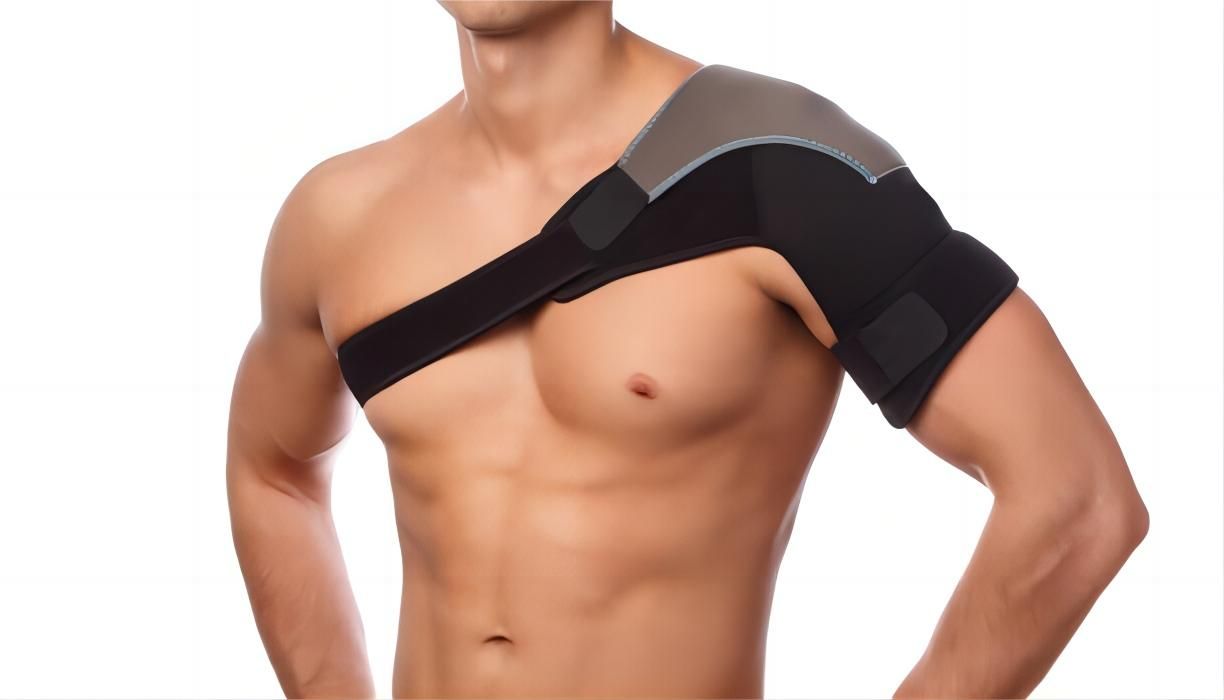john@lee-mat.com
+86-13510662576

GET QUOTE
How Do Shoulder Braces Work?
Understanding Shoulder Braces
Definition and Types of Shoulder Braces
Shoulder braces come in various types, each serving specific purposes:
- Immobilizing braces: These braces restrict shoulder movement entirely and are typically used for severe injuries requiring complete immobilization.
- Compression braces: Designed to provide gentle pressure and support to the shoulder area, these braces are beneficial for reducing pain and swelling.
- Stabilizing braces: Offering a middle ground between immobilization and compression, stabilizing braces limit excessive movement and provide additional support, making them ideal for moderate injuries or chronic conditions.
How Each Type Works
- Immobilizing braces: By securely encasing the shoulder joint and upper arm, immobilizing braces minimize movement, reducing the risk of further damage and allowing injured tissues to heal effectively.
- Compression braces: These braces apply controlled pressure to the affected area, reducing swelling, improving blood circulation, and promoting a more efficient healing process. The even distribution of pressure alleviates discomfort and encourages optimal recovery.
- Stabilizing braces: Equipped with adjustable straps or slings, stabilizing braces support the shoulder in a controlled position, limiting excessive movement and providing added stability. This reduces the risk of further injuries and enhances overall shoulder function.
Understanding the nuances of each type of shoulder brace empowers individuals to make informed decisions regarding their treatment and rehabilitation strategies. Whether recovering from an injury or seeking preventive measures, choosing the right shoulder brace is crucial for optimal outcomes.
Mechanism of Action
Providing External Support and Reinforcement
Shoulder braces function by offering external support and reinforcement to the shoulder joint. This support aids in stabilizing the joint and surrounding tissues, which is crucial for facilitating the healing process and preventing further injury.
Stabilizing the Shoulder Joint and Surrounding Tissues
One of the primary functions of shoulder braces is to stabilize the shoulder joint and surrounding tissues. By limiting excessive movement and providing additional support, braces help reduce strain on weakened or injured areas, promoting stability and facilitating recovery.
Promoting Proper Alignment and Healing
Shoulder braces play a vital role in promoting proper alignment of the shoulder joint. By aligning the shoulder in a controlled position, braces help alleviate pain, inflammation, and discomfort while supporting the natural healing process of injured tissues.
Benefits of Using Shoulder Braces
Aid in Injury Recovery
Shoulder braces offer several benefits for injury recovery, including speeding up the healing process and reducing strain on injured areas. By providing stability and support, braces minimize the risk of further damage, allowing damaged tissues to heal effectively.
Prevention of Further Injury
Shoulder braces are particularly beneficial for preventing further injury, especially for athletes and individuals engaged in physically demanding activities. By restricting potentially harmful movements and providing support, braces help reduce the risk of overuse injuries or re-injuries.
Pain Management
One of the significant benefits of using shoulder braces is pain management. By reducing inflammation, swelling, and discomfort, braces alleviate pain and promote better blood circulation, aiding in the body's natural healing processes.
Posture Correction
Shoulder braces also play a crucial role in posture correction. By gently pulling the shoulders back and aligning them in a more natural position, braces alleviate strain on the shoulder and upper back muscles, providing relief from tension and improving posture over time.
Conditions That Benefit from Shoulder Braces
Shoulder braces are highly effective in managing various shoulder injuries and conditions, including:
- Dislocated shoulder
- Rotator cuff tears
- Shoulder arthritis
How Shoulder Braces Help Each Condition
Shoulder braces offer tailored support and relief for specific shoulder conditions:
For dislocated shoulders, immobilizing braces provide stability and prevent further displacement.
Rotator cuff tears benefit from the support and compression provided by braces, aiding in healing and reducing pain.
Shoulder arthritis can be alleviated with braces offering strengthening support and pain relief, improving joint function and mobility.
How to Choose the Right Shoulder Brace
Consideration of Individual Condition and Needs
When selecting a shoulder brace, it's essential to consider your specific condition and requirements. Different braces cater to varying levels of support and functionality, ensuring optimal recovery and comfort.
Lifestyle Factors and Level of Activity
Your lifestyle and level of activity play a crucial role in choosing the right shoulder brace. Whether you're an athlete or lead a more sedentary lifestyle, there are braces designed to accommodate your activity level and provide the necessary support.
Comfort, Fit, and Ease of Use
Comfort, fit, and ease of use are paramount when selecting a shoulder brace. The brace should fit snugly without restricting circulation or causing discomfort, allowing for seamless integration into your daily routine.
Conclusion
Shoulder braces play a crucial role in managing shoulder injuries and conditions by providing support, stability, and pain relief. Whether recovering from an injury or seeking preventive measures, the benefits of shoulder braces extend to aiding in injury recovery, preventing further damage, managing pain, and improving posture.
Take the first step towards a healthier, pain-free life by browsing Lee-Mat's range of shoulder braces today. Our selection of braces offers tailored support and comfort, empowering you to take control of your shoulder health and well-being.
Invest in a Lee-Mat shoulder brace and embark on your journey towards optimal recovery and mobility.


